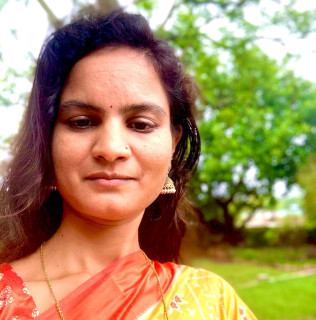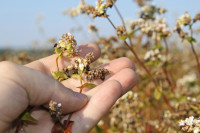Cover picture's source: ICRISAT
Harvesting, drying, processing, and storage are essential steps in the post-harvest handling of pigeonpea (Cajanus cajan L.) cultivation. Properly executing these steps ensures the preservation of the crop's quality and helps prevent losses due to pests and moisture.
When and How to Harvest Pigeon pea plants
Pigeonpea should be harvested when 75-80% of the pods are at physiological maturity. Typically, this is when the pods turn light brown, and the seeds inside are firm and have reached their full size. The crop can be harvested manually using sickles or mechanical harvesters. Plants are cut with a sickle 60-75 cm above the ground. The harvested plants are tied in bundles and stacked upright to dry.
Another way to harvest pigeon peas is by handpicking the mature pods. This allows the crop to flower and pod for a second or even third time. Hand-picking may not be economical after the second flush. If handpicking is not feasible, the upper branches with mature pods should be cut by leaving the foliage, allowing the plant to regrow. However, this method delays the second harvest and results in lesser yield.
Post-harvest handling of pigeon peas
Drying of pigeon peas after harvest
After harvesting, the pigeon pea plants should be spread out in the field to dry for a few days. This helps reduce the moisture content and prevents mold and fungal growth during storage.
Processing of pigeon peas
Threshing is the process of separating the dried pigeon pea seeds from the pods and stems. Traditional methods include beating the dried plants with sticks or using a threshing machine for larger quantities. The proportion of seed to pods is generally 50-60%. Ensure that the threshing process is done gently to avoid damaging the seeds.
Winnowing of pigeon peas
After threshing, the pigeon pea seeds can be winnowed to remove any remaining chaff and dust. This process is typically done by allowing a light breeze or wind to blow away the lighter chaff, leaving the heavier seeds behind.
Cleaning: Check the pigeonpea seeds for any damaged or moldy seeds, stones, or other foreign material, and remove them by hand or using a sieve. The clean seeds should be sun-dried for 3-4 days to bring their moisture content to 9-10% to safely store in gunny bags or appropriate bins.
How to store pigeon peas - Best conditions to store pigeon peas
Proper storage is crucial to prevent pest infestation and maintain the quality of the pigeon pea crop. Use clean, dry storage containers or bags to store the cleaned pigeonpea seeds. Seal the containers tightly to prevent moisture and pests from entering. Store the pigeonpea seeds in a cool, dry, well-ventilated area away from direct sunlight. It's advisable to treat the seeds with appropriate insecticides (neem leaf powder) or store them in airtight containers with insect-proofing measures to protect against pests.
References:
Pigeonpea Botany and Production Practices, Compiled by Faujdar Singh and D.L. Oswalt. International Crops Research Institute for the Semi-Arid Tropics.
https://vikaspedia.in/agriculture/crop-production/package-of-practices/pulses/pigeon-pea
Kumar, Dinesh & Dogra, Baldev & Dogra, Ritu & Singh, Inderjit & Manes, G. (2019). LR-3216 [1-7] Optimization of operational parameters for mechanized harvesting of pigeon-pea (Cajanus cajan) with combine harvester. Legume Research. 10.18805/LR-3216.
Further reading
Pigeon pea: Plant information, History, and Nutrition
Principles of selecting the best varieties and hybrids for Pigeon pea cultivation
Pigeon pea Soil requirement, Soil preparation and Plant density
Irrigation requirement for Pigeon pea Cultivation
Fertilization requirement for Pigeon Pea
Pigeon pea insect pests and their management
Weed Management in Pigeon Pea Farming
Pigeon pea Diseases and Management Practices
Harvesting, Drying, Processing, and Storage of Pigeon pea







